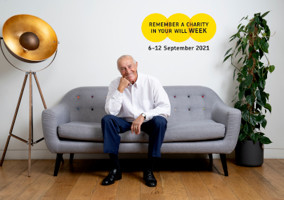Legacies may well be the largest source of voluntary income at a sector level, but it doesn’t always follow that it’s easy to get organisational buy-in. And yet, when you think about the factors that distinguish organisations that succeed in legacy fundraising from others, having a culture and workforce that champions legacies really is vital.
I’m a big believer that everyone has to play a part if a charity is to reach anywhere near its legacy potential. From community fundraisers and supporter care teams to the people on the front line, trustees and senior leaders, we can all be legacy-ready and enthuse supporters with the passion and drive to leave a gift in their will.
But how do you get to that point? What can legacy fundraisers do to get not only the fundraising team on side, but the whole organisation’s backing and buy-in, particularly during such challenging times where budget and staff time is stretched?
Winning hearts and minds
You might know how important legacies are to you, but you’ll want to make sure others do too. Here at the NSPCC, legacies are our second biggest income source (behind individual giving). They brought in around £20m for the charity last year. You can imagine what a difference that makes, especially with the pandemic at large! These numbers can be a powerful driver in conveying impact.
While the numbers convey the rationale, it’s real, human stories from legacy givers and beneficiaries that express the passion and impact of those gifts. These personal perspectives are just as powerful for internal audiences as the would be for anyone thinking about leaving a gift. How better to build people’s confidence in raising the topic of legacy giving than sharing stories about why people wanted to leave a gift and how lives have been impacted by those decisions?
Critically, you need to have a really clear legacy proposition that everyone will engage with and understand. What will a legacy actually do? For us at the NSPCC, we see legacies as our guardian for children’s futures for generations to follow. Once we articulate this, our teams really do get why they are so important and why they should play a role.
Capture people’s attention with the weird and wonderful
Legacies are an exciting world – to think that people care enough about what we do to write a gift into their will is an incredible thing. And yet, internal communication is often on the dry side. It’s the quirky stories, the weird and wonderful that capture people’s attention – and we really do need to do that if we’re going to keep legacies front of mind.
So, when someone left us a case of ever so slightly creepy dolls in their will or, in a former role, when the charity inherited a cat, I found that sharing these tales helped people across the organisation to engage. While working at RNID, the charity was left an Ewok, which gave me the impetus to run a Star Wars themed legacy day for staff. We scheduled it for – yes, you guessed it – May 4th.
Legacy themed days or events can be an excellent way to make legacies a focal point. And national initiatives like Remember A Charity Week, Free Wills Week and Will Aid are great platforms to shine a light on legacies. It takes some work to keep the momentum going across the year, but by piggy-backing on other teams’ communications and events, and being proactive, you can ensure legacies always have a place.
Give people the tools to play their part
Essentially, if you want people to champion legacies, you need to make it as easy as possible, giving them the confidence and the tools to make it happen. At the NSPCC, we’ve created a legacy toolkit, which breaks down our messaging and offers practical tips for writing and talking about legacies, with suggestions of wording, imagery and more. It builds on our legacy proposition, linking to the organisation’s main aims and therefore people’s work goals.
The toolkit forms the basis of training sessions and can be embedded into our induction process. We also give staff packs of forget-me-not seeds to share, with the messaging that legacy gifts will help future generations of children to thrive. These have been really popular, helping to get legacy conversations started.
Embedding legacies from the top
When it comes to organisational buy-in, having a supportive leadership team and trustees that recognise how important legacies are and their role in securing the charity’s future, makes such a difference. This level of support certainly makes it a great deal easier to get everyone else on side. Setting up a working group of legacy champions can also help give people responsibility and clarity over what they can do to support legacies, whether it’s sourcing case studies or highlighting legacies at the next event.
Of course, don’t forget to ensure that people with responsibility for internal communications get legacies too – they are often the gateway to a myriad of opportunities for sharing news and information charity-wide.
Organisational buy-in really is vital, but achieving that doesn’t have to be complex. The sad inevitability of Covid is that it has triggered more people to think about end-of-life matters. Many people are looking to leave a gift in their will and we’re seeing more openness around these conversations. This makes it’s even more important that everyone across the organisation is ready to help those who want to protect future generations by remembering us in such a special way.
Laura Jacques is fundraising manager – legacies and tribute at the NSPCC
Related articles











